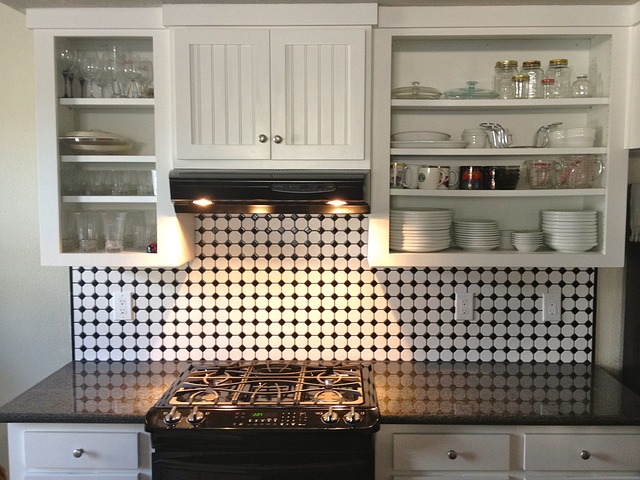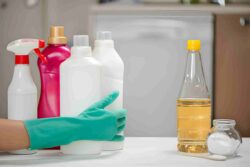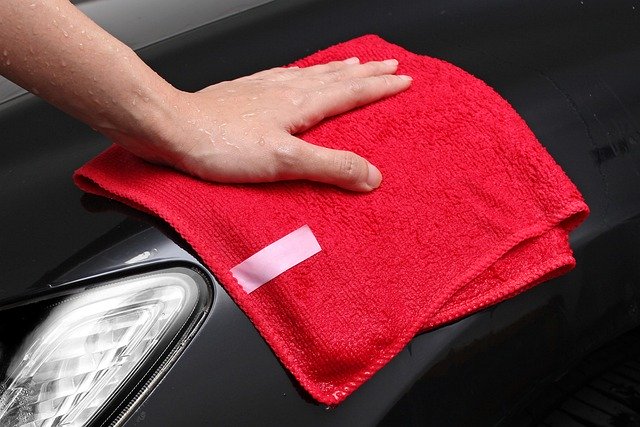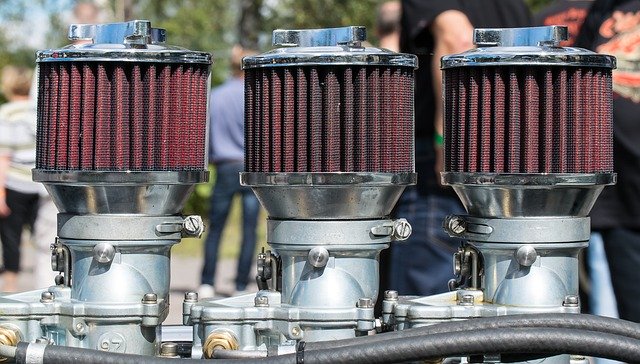Keeping your kitchen appliances clean isn’t just a matter of making them look good. It’s also about ensuring that they are operating at their maximum efficiency and that you’re keeping any harmful bacteria at bay. We all know the importance of good hygiene, but do we take enough care when it comes to our kitchen appliances? They are the unsung heroes of our day-to-day life, cutting, cooking, freezing and heating our favourite foods. So, let’s explore how to clean and disinfect your kitchen appliances properly.
The simplest way to maintain your kitchen appliances’ efficiency is through regular cleaning and disinfection. We know it might sound like alot, but with the right tools and techniques at hand, it’s easier than you think.
To start, you’ll need a few basic materials. Grab a pair of gloves, some mild dishwashing detergent, white vinegar, baking soda, microfibre cloths, and a scrub brush. These materials are generally enough for cleaning most kitchen appliances and are great at getting rid of grease and grime.
In this guide on how to clean and disinfect your kitchen appliances, we will walk you through the steps to effectively clean and disinfect your kitchen appliances, ensuring they operate at their maximum efficiency while providing a safe and sanitary space for your culinary adventures.
The Importance of Regular Cleaning and Disinfection
Keeping your kitchen appliances clean and disinfected offers a range of benefits, including:
- Enhanced Efficiency: By removing dirt, grease, and debris, you can ensure your appliances function optimally, saving you time and energy in the long run.
- Extended Lifespan: Regular cleaning and maintenance help extend the lifespan of your appliances, preventing costly repairs or premature replacements.
- Improved Food Safety: Properly cleaning and disinfecting your appliances helps eliminate bacteria, viruses, and other pathogens that can contaminate your food and compromise your health.
- Educate and Involve Encourage everyone in your household or workplace to participate in cleanliness efforts, creating a collective responsibility.
- Ventilate Your Space Good ventilation helps disperse airborne particles, enhancing the effectiveness of cleaning efforts.
How to Clean and Disinfect Your Refrigerator

Your refrigerator is one of the most important appliances in your kitchen, responsible for keeping your perishable food fresh and safe to consume. Here’s how you can clean and disinfect it effectively:
- Empty and Remove Contents: Start by emptying the refrigerator, and removing all food items, shelves, and drawers. Discard any expired or spoiled food.
- Wipe Down Surfaces: Use a mixture of mild dish soap and warm water to wipe down the interior surfaces of the refrigerator, including the walls, shelves, and drawers. Avoid using harsh chemicals or abrasive scrubbers that can damage the surfaces.
- Deodorise: To eliminate any lingering odours, place an open box of baking soda or a bowl of activated charcoal inside the refrigerator. These natural absorbents will help neutralize unpleasant smells.
- Clean the Exterior: Wipe the exterior of the refrigerator with a damp cloth and mild soap. Pay special attention to the handles and buttons, as they tend to accumulate dirt and bacteria.
- Clean the Condenser Coils: Locate the condenser coils at the back or beneath the refrigerator and use a vacuum or a brush attachment to remove dust and debris. Clean coils ensure proper cooling efficiency.
- Reassemble and Restock: Once everything is dry, reassemble the shelves and drawers, and return the food items to the refrigerator.
How to Clean and Disinfect Your Oven
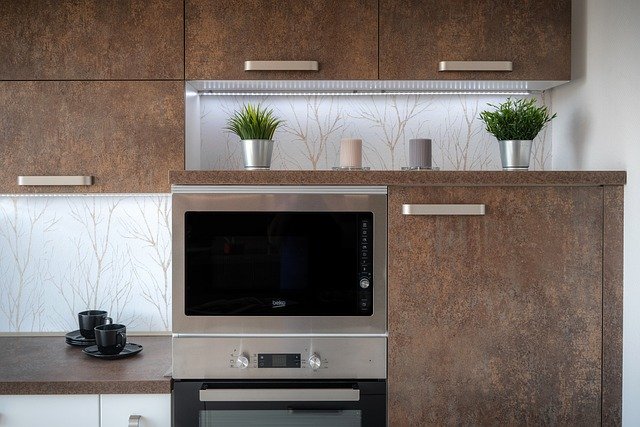
Cleaning your oven may seem like a daunting task, but with the right approach, it can be relatively simple. Follow these steps to clean and disinfect your oven effectively:
- Remove Oven Racks: Take out the oven racks and soak them in a sink filled with warm, soapy water. Scrub them gently to remove any built-up grease or food residue. Rinse and dry them thoroughly before returning them to the oven.
- Create a Cleaning Paste: In a small bowl, mix baking soda and water to form a thick paste. Apply the paste to the interior surfaces of the oven, focusing on areas with stubborn stains or grease buildup.
- Let It Sit: Leave the baking soda paste on the oven surfaces for several hours or overnight. This allows the paste to break down grease and grime effectively.
- Wipe Away Residue: Using a damp cloth or sponge, wipe away the baking soda paste, taking care to remove all residue. For stubborn stains, you may need to scrub gently with a non-abrasive sponge.
- Clean the Oven Window: If your oven has a window, spray a glass cleaner on a cloth and wipe it clean. Ensure it is streak-free for a clear view of your cooking progress.
- Clean the Exterior: Wipe down the exterior surfaces of the oven, including the control panel, knobs, and door handle, using a mild cleaner or a vinegar-water solution.
How to Clean and Disinfect Your Dishwasher

The dishwasher plays a vital role in maintaining cleanliness in your kitchen. Here’s how you can keep it running efficiently by cleaning and disinfecting it:
- Remove Debris: Before cleaning the dishwasher, remove any leftover food debris or foreign objects from the drain and filter. This step prevents clogs and ensures proper drainage.
- Wipe Down the Interior: Use a damp cloth or sponge to wipe the interior surfaces of the dishwasher, paying attention to the walls, racks, and door. Remove any stains or buildup that may hinder its performance.
- Clean the Spray Arms: The spray arms distribute water during the wash cycle. Remove them and rinse them under warm water to dislodge any food particles or mineral deposits that may have accumulated.
- Unclog the Spray Holes: Inspect the spray arm holes for any blockages and use a toothpick or small brush to clear them. This step ensures that water flows freely and cleans your dishes effectively.
- Run a Cleaning Cycle: Some dishwashers have a self-cleaning function. If yours does, follow the manufacturer’s instructions to run a cleaning cycle. This cycle typically uses high-temperature water and specialized cleaning agents to remove buildup and bacteria.
- Maintain Regular Maintenance: To keep your dishwasher running efficiently, clean the filter regularly and inspect the rubber gasket around the door for any mould or mildew. Wipe it down with a mixture of vinegar and water to prevent bacterial growth.
Conclusion
Regularly cleaning and disinfecting your kitchen appliances is essential for maintaining there efficiency and ensuring a hygienic cooking environment. By following the steps outlined in this guide, you can keep your refrigerator, oven, and dishwasher in top condition, prolong there lifespan, and enjoy clean and healthy meals. Remember, a clean kitchen is a happy kitchen!





